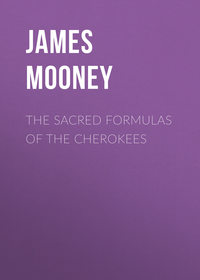Kitabı oku: «The Sacred Formulas of the Cherokees», sayfa 2
Bir şeyler ters gitti, lütfen daha sonra tekrar deneyin
Türler ve etiketler
Yaş sınırı:
0+Litres'teki yayın tarihi:
01 temmuz 2019Hacim:
175 s. 10 illüstrasyonTelif hakkı:
Public Domain